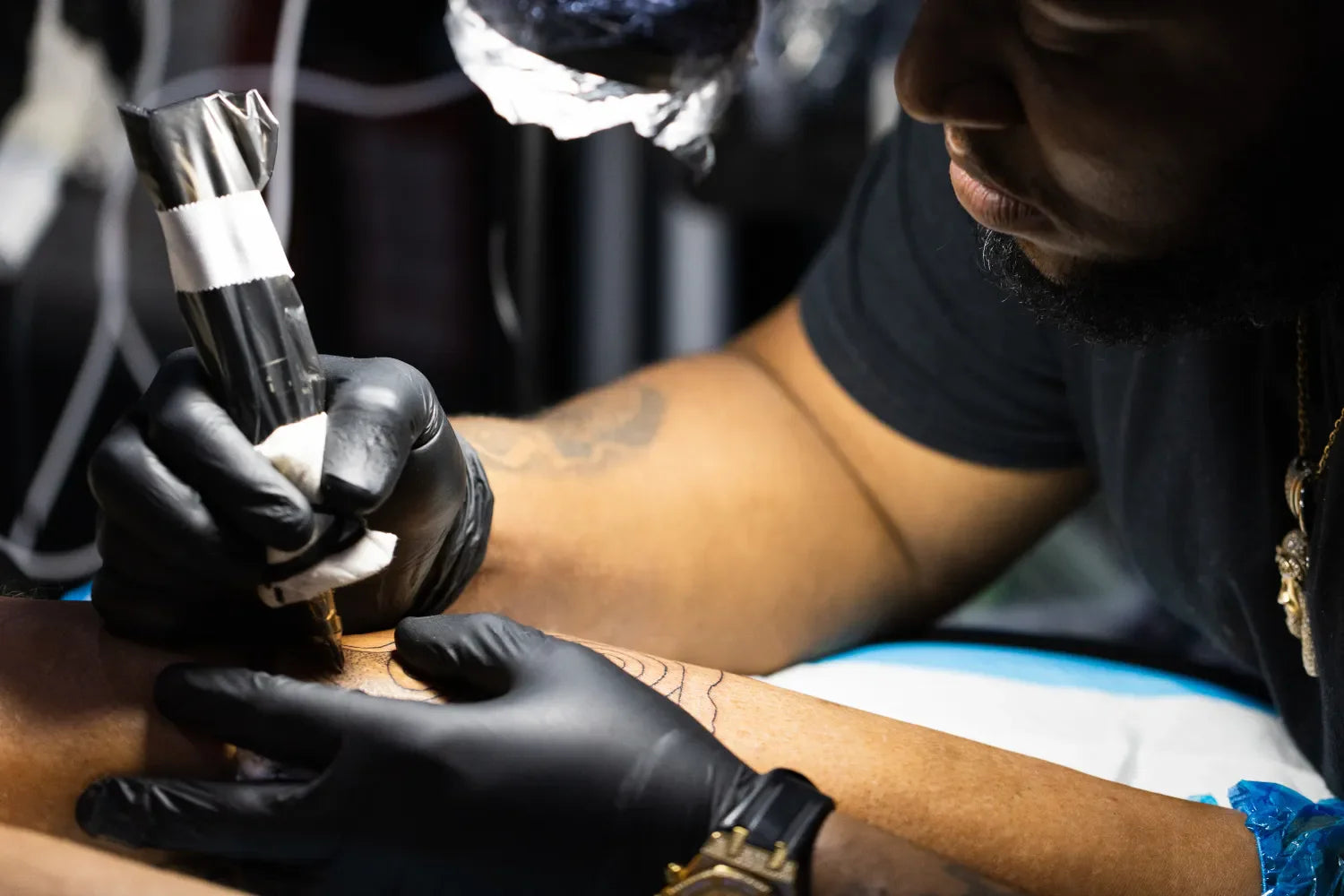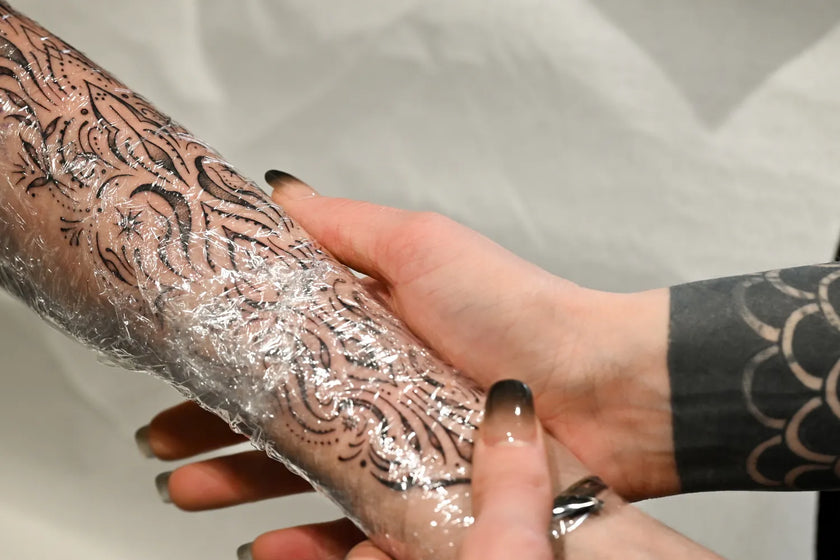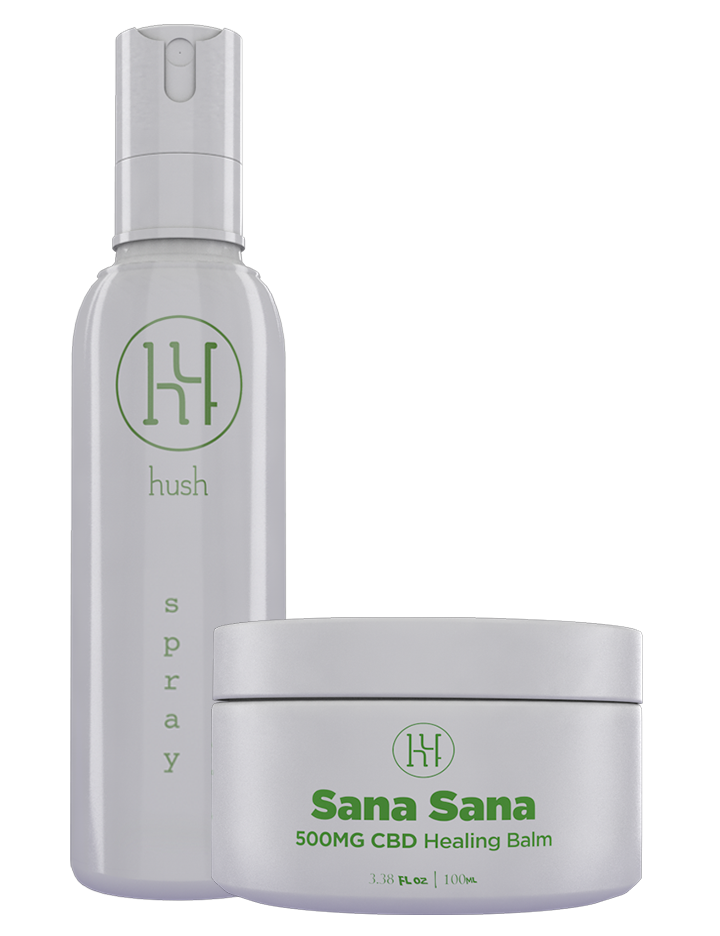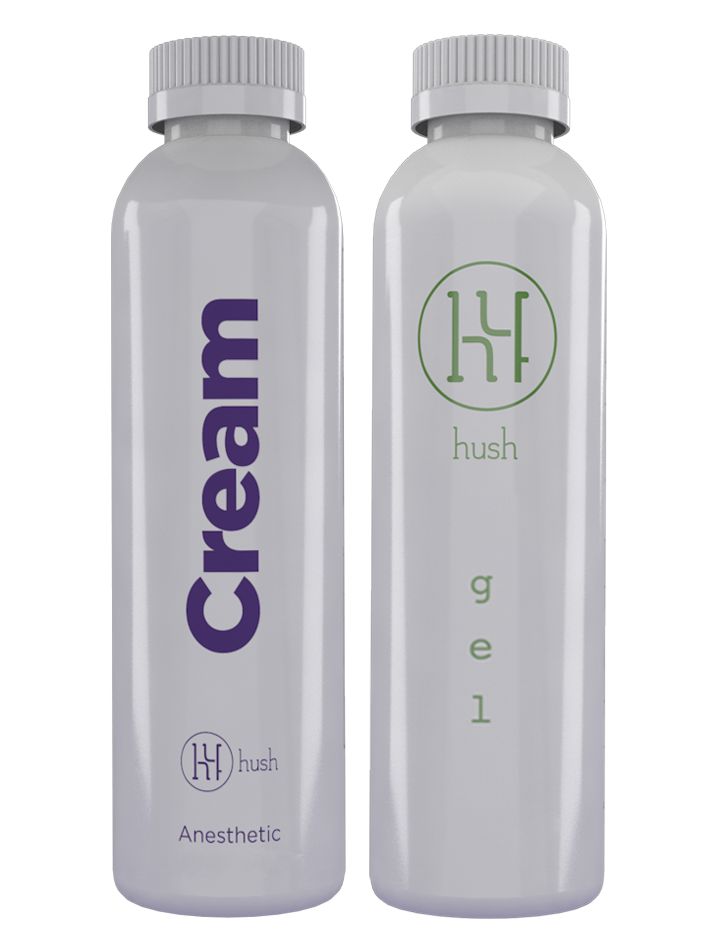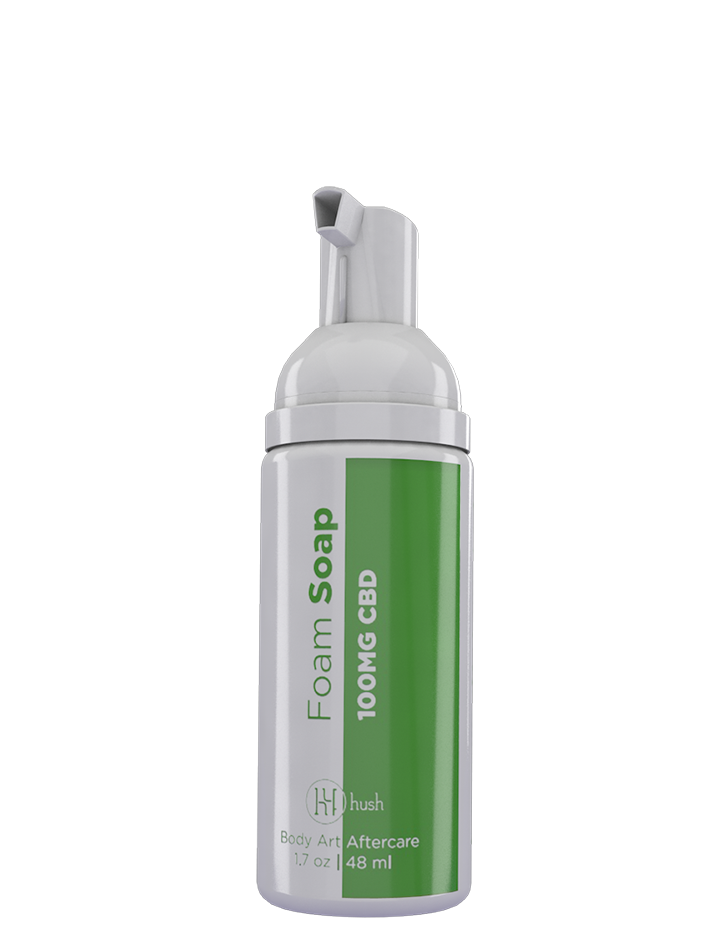Key Takeaways
- Fading is inevitable but can be slowed with proper care.
- Sun exposure and poor aftercare are the biggest culprits.
- Tattoo care is a lifelong process. If you stop maintaining your tattoo, it can fade at any time.
You dropped serious cash and a few hours of your pain tolerance in the tattoo chair. The linework was crisp, the shading was smooth, and the colors popped like wet paint. Fast forward a few weeks, a few months, a few years, and what happened? That vibrant piece looks muted, softer, and faded.
Before you panic and start questioning your artist’s skills, consider what happened after you left your artist's chair. Ink changes as it heals, as you age, and as you expose it to the world. It also changes depending on how you care for it while it's healing. A bit of softening is normal, but sometimes a tattoo can fade faster than it should.
Let’s break down 10 major reasons tattoos fade, what you can do to slow that process, and how proper aftercare keeps your art sharp for the long haul.
How Does Tattoo Ink Settle Into Your Skin?
A little bit of tattoo fading is unavoidable. It’s because of the complicated process that’s constantly going on right beneath the surface of your skin. You can’t avoid this part.
When a tattoo needle hits your skin, it’s not just scratching the surface. Each puncture drives ink down past the epidermis (the outer layer that constantly sheds) into the dermis (the second layer, rich with collagen, blood vessels, and nerve endings). This is where your body grabs onto your tattoo.
The dermis is stable compared to the epidermis, which renews itself every few weeks. By depositing pigment in the dermis, the ink stays locked in place for years. That’s why tattoos don’t wash away or heal until they're invisible.
Once ink is deposited, your body recognizes those pigment particles as foreign. Immune cells called macrophages rush in to contain the ink and keep it from traveling to other places. Some of these cells successfully swallow pigment and carry it away, which explains part of the fading over time.
Many macrophages simply die with the ink inside, and new macrophages come in to repeat the cycle. The result? Ink particles remain suspended in the dermis, trapped in a cellular tug-of-war, giving your tattoo its permanence.
As healing kicks in, collagen fibers knit around the ink, locking pigment into the skin’s structure. This is why healed tattoos look slightly softer than the fresh stencil. The body integrates the ink into living tissue.
Over the years, natural aging, UV light, and skin regeneration break down pigment molecules slowly, leading to gradual fading and blur. As long as the dermis remains intact, your tattoo stays a part of you.
The simple version: tattoo ink settles into the dermis, gets wrangled by your immune system, and ends up preserved in a biological stalemate that makes tattoos permanent.
1. Healing Process and Scabbing
Your fresh tattoo is essentially an open wound. Scabs form when the wound heals. If you pick at them or the skin peels unevenly, pigment can lift out with the scab. The result is patchy spots that look faded compared to the surrounding areas.
When you pick out a deep scab, it leaves a scar. The scar might not be as receptive to tattoo ink as healthy skin. Even if you get a touch-up in that spot, it may not completely restore your tattoo or hold onto the ink as well.
That’s why it’s extremely important not to pick. Wear mittens if you have to! Just leave the thing alone.
The fix: Let scabs and flakes fall off naturally. Picking is the quickest way to ruin a tattoo’s vibrancy before it even finishes healing. If it's already too late, the only option is a touch-up to re-ink the peeled spots. You still might run into some trouble.
2. Sun Exposure
UV rays hate your skin. Seriously. They damage your skin and can even threaten your health. Sunlight breaks down pigment molecules in tattoos and causes colors to dull. Black ink softens into a bluish color and vibrant reds and yellows fade into faint pastels. A tattoo that sees a lot of sun without protection can look aged within a couple of summers.
The fix: SPF 30 or higher sunscreen every time your tattoo sees daylight. Clothing coverage is even better. You should really be putting sunscreen on your whole body. All of your skin needs protection, not just your tattoo.
3. Poor Aftercare
That aftercare sheet your artist gave you? It’s not optional. Skip cleaning, forget to moisturize, or suffocate your tattoo in cling film too long, and you’re setting yourself up for healing issues and long-term dullness.
The fix: Wash gently with unscented soap, moisturize lightly, and follow your artist’s instructions to the letter. The HUSH tattoo aftercare kit contains everything you need to make aftercare easy.
4. Placement Matters
Some areas of the body are notorious for quicker fading. Your fingers, palms, feet, elbows, spots that bend or rub, and shed skin more often. Tattoos here can blur or lighten faster because the skin has to repair itself more often.
The fix: Touch-ups are common for high-friction areas. Placement is a lifestyle choice. If you want a tattoo in an area that's notorious for faster wear and tear, keep in mind that you'll need to maintain it.
5. Ink Quality
Cheaper inks or inexperienced mixing can mean less pigment saturation, making a tattoo fade sooner. Professional artists invest in high-quality pigments that stay truer for longer.
Most experienced tattoo artists are very discerning about the kinds of ink they use, and that's why great tattoos are always a little more expensive. Reliable ink can be costly, and you get what you pay for.
The fix: Do your homework on your artist. A reputable shop uses professional-grade ink and won’t cut corners. If you go to someone who bought a DIY tattoo kit on Amazon, you're going to walk away disappointed for countless reasons.
6. Depth of Application
If the needle doesn’t penetrate deep enough into the dermis, ink sits too close to the surface and sheds with the top skin layers. Too deep, and the ink can blur (a blowout). Correct depth keeps ink locked where it belongs.
The fix: Choose a skilled, experienced artist. Tattooing is as much a technical craft as it is art. You may also want to carefully consider the style of tattoo you're getting. Delicate watercolor tattoos sometimes utilize shallower placement in certain areas, and you may be more likely to experience ink loss.
7. Skin Type and Regeneration
Everyone’s skin is different. Oily skin may blur fine lines faster. Dry skin may flake excessively during healing. People with high natural cell turnover may notice tattoos soften more quickly.
If you have a condition like psoriasis or eczema, it’s probably not a good idea to put a tattoo in an area where you’re prone to experiencing flare-ups. A tattoo in a touchy spot may never heal correctly or could be repeatedly damaged by a skin condition. Keep in mind that a tattoo can trigger a psoriasis breakout in a new place if you have psoriasis.
The fix: Keep skin hydrated and healthy. Moisturize regularly with unscented lotion, eat a balanced diet, and drink water. You can keep using HUSH CBD tattoo balm long after you heal.
8. Color Choices
Some pigments are naturally more resilient. Black, dark blue, and deep green last longest. Lighter shades like yellow, pink, and white tend to fade faster. Even with perfect care, a pastel tattoo won’t look as bold in five years as a black sleeve.
The fix: Expect maintenance with lighter inks. Some people embrace the softer, aged look, and others plan for periodic touch-ups. Adding a darker outline to pastel colors can create a little more contrast, helping faded ink show a little better against your skin.
9. Lifestyle Wear and Tear
Manual labor, constant friction from clothes or equipment, and even excessive sweating can impact tattoos. A shoulder tattoo that constantly rubs against a backpack strap may fade faster. Work boots can wear away a foot tattoo over the years.
The fix: Be mindful of daily wear. Moisturize, protect, and accept that high-friction areas may need love over time. It’s a good idea to avoid placing more tattoos in areas that might see similar damage.
10. Aging, Period.
Even with the best care, your skin changes. Collagen decreases, elasticity drops, and your tattoo rides along with the process. Lines blur slightly, colors soften, and contrast fades. That’s life, and tattoos age like we do.
The fix: Take care of yourself! Healthy eating, avoiding direct sunlight without sunblock, and drinking plenty of water can help your skin age well. Healthy skin aging makes for healthy tattoo aging.
Comprehensive Tattoo Aftercare
Your tattoo’s long term look is heavily determined in the first few weeks of healing. Here’s a breakdown of proper aftercare that protects against premature fading.
The First 24 Hours
- Leave the wrap on for as long as your artist recommends.
- Wash gently with lukewarm water and fragrance-free soap. Pat dry. Never rub or scrub!
- Apply a thin layer of tattoo balm if instructed.
Days Two to Seven
- Wash twice daily, gently.
- Moisturize lightly. Don’t drown it! Too much lotion suffocates the skin.
- Avoid soaking (no pools, hot tubs, or baths).
- Don’t expose your tattoo to sunlight.
Weeks Two to Four
- Expect peeling and itching. Use HUSH tattoo numbing spray to dull the itchy sensation.
- Stay on top of the moisturizing process.
- Continue avoiding sun exposure and swimming.
Long-Term Care
- Always use sunscreen.
- Moisturize daily to keep skin healthy.
- Schedule touch-ups as needed.
- Avoid abrasive scrubs or exfoliants directly on your tattoo.
Remember: Aftercare doesn’t stop after healing. Lifelong care keeps tattoos looking sharp. The better you take care of your body, the better you take care of your tattoo. Making generally healthy life choices can go a long way in preserving your tattoo.
FAQs
Is it normal for a tattoo to look dull while healing?
Yep. A healing tattoo often looks cloudy or faded under peeling skin. Once healed, the vibrancy returns.
Can faded tattoos be fixed?
Absolutely. A skilled artist can touch up or even rework faded designs.
Do all tattoos fade?
Yeah. Some fade faster than others, but every tattoo softens with age. Proper care just slows the process.
Will weight gain or loss affect my tattoo?
Significant skin stretching can distort tattoos, but moderate changes usually have little impact.
The Bottom Line on Tattoo Fading
When your tattoo looks faded, it’s not always a disaster. Sometimes, it’s just the healing phase. Sometimes, it’s lifestyle, placement, or the natural reality of aging skin. Tattoos change and grow with you.
The good news? With mindful aftercare, regular protection, and the occasional touch-up, your ink can stay bold for decades. Keep your HUSH Tattoo Aftercare Kit handy, slather on the sunscreen, and moisturize for life. Your skin will stay healthy, and your tattoo will appreciate it.
Sources:
Tips to Stay Safe in the Sun: From Sunscreen to Sunglasses | FDA
